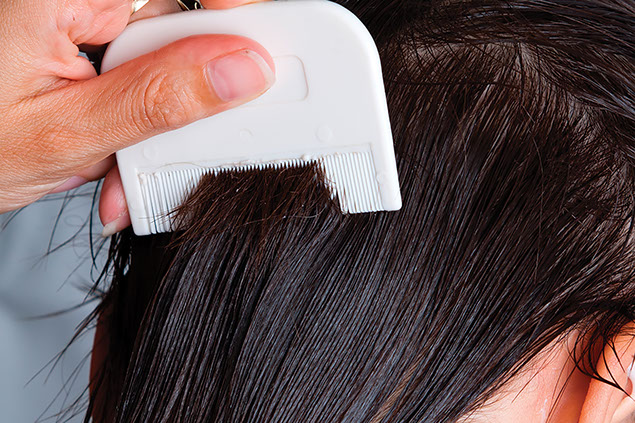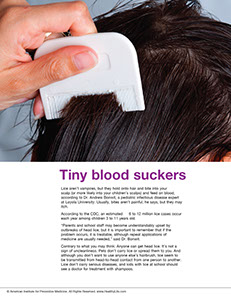SYMPTOM CHECKER
CONDITIONS
Male
Female
Child
Arm, Hand & Shoulder Concerns
Legs & Feet Concerns
Dental & Mouth Concerns
Ear & Nose
Eye Conditions
Head Conditions
Arm, Hand & Shoulder Concerns
Legs & Feet Concerns
Front
Back
Arm, Hand & Shoulder Concerns
Dental & Mouth Concerns
Ear & Nose
Eye Conditions
Head Conditions
Arm, Hand & Shoulder Concerns
Dental & Mouth Concerns
Ear & Nose
Eye Conditions
Head Conditions
Front
Back
Arm, Hand & Shoulder Concerns
Neck Links
Head & Neck Concerns
Arm, Hand & Shoulder Concerns
Neck Links
Head & Neck Concerns
Front
Back
Online Clinic
Wise Healthcare
Tiny blood suckers

Print on Demand
Lice aren’t vampires, but they hold onto hair and bite into your scalp (or more likely into your children’s scalps) and feed on blood, according to Dr. Andrew Bonwit, a pediatric infectious disease expert at Loyola University. Usually, bites aren’t painful, he says, but they may itch.
According to the CDC, an estimated 6 to 12 million lice cases occur each year among children 3 to 11 years old.
“Parents and school staff may become understandably upset by outbreaks of head lice, but it is important to remember that if the problem occurs, it is treatable, although repeat applications of medicine are usually needed,” said Dr. Bonwit.
Contrary to what you may think: Anyone can get head lice. It’s not a sign of uncleanliness. Pets don’t carry lice or spread them to you. And although you don’t want to use anyone else’s hairbrush, lice seem to be transmitted from head-to-head contact from one person to another. Lice don’t carry serious diseases, and kids with lice at school should see a doctor for treatment with shampoos.
This website is not meant to substitute for expert medical advice or treatment. Follow your doctor’s or health care provider’s advice if it differs from what is given in this guide.
The American Institute for Preventive Medicine (AIPM) is not responsible for the availability or content of external sites, nor does AIPM endorse them. Also, it is the responsibility of the user to examine the copyright and licensing restrictions of external pages and to secure all necessary permission.
The content on this website is proprietary. You may not modify, copy, reproduce, republish, upload, post, transmit, or distribute, in any manner, the material on the website without the written permission of AIPM.
2021 © American Institute for Preventive Medicine - All Rights Reserved. Disclaimer | www.HealthyLife.com















































